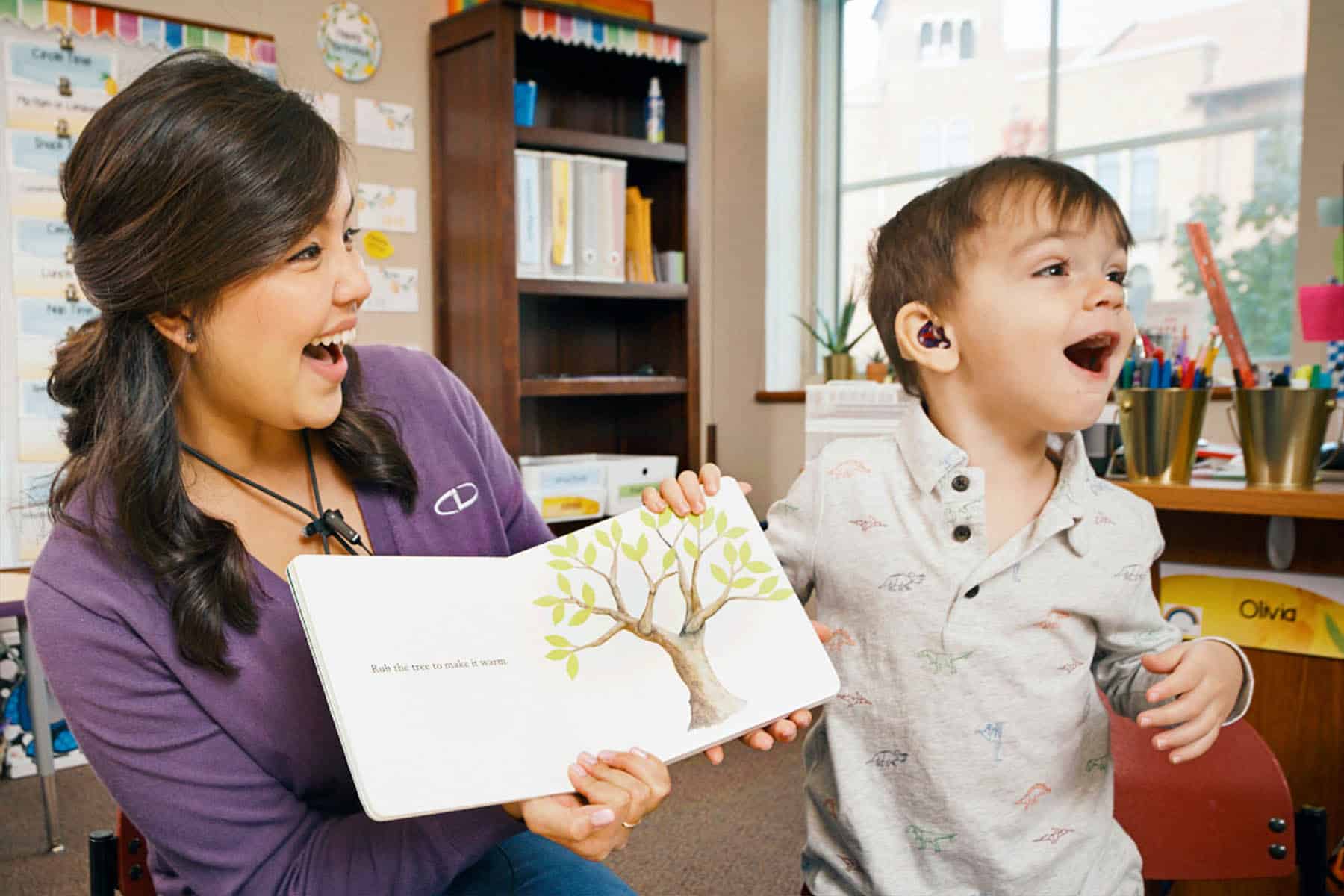Prompting language can easily be overlooked on the road to developing spontaneous language. Children begin learning language by imitating vocabulary and language modeled by others around them. Parents and professionals begin teaching children to imitate from a model. It’s quick and easy to provide a model using correct language and then expect the child to imitate it. Modeling and imitation give the child the experience of rich, complete language. But after a child is able to imitate specific language with ease, it’s time to move to prompting.
Prompting vocabulary and language is most appropriate when you have the idea that the child may be able to say certain words, phrases or sentences. You give prompts to help her say the targeted language without giving a complete model first. Prompting is often done verbally by asking a question and/or nonverbally by using a natural gesture such as pointing, as in the following examples:
Verbal: While reading a book about farm animals, you might ask “What do you see?” The child might then label an animal by saying the word or an approximation of the word. For older children, you might ask a similar question while reading a textbook to prompt the use of a vocabulary word or concept.
Nonverbal: As you’re getting ready for a snack, you get out the juice. To prompt the child, you might show her the juice in your hand, point to it with the other hand and raise your eyebrows with an expectant look. This may prompt her to say “Juice” or “oo.” You can then praise and reinforce her. Say “You’re right! That’s your juice. Here’s your juice.” and hand her the cup. With older children, you can withhold a wanted item until the child uses the targeted language in a similar way. For example, you might withhold materials for an art or science project. Prompt them to ask for what they need to complete the task.
Using prompts is an important, natural scaffolding step between modeling and imitation and the child using vocabulary and language spontaneously. It’s essential to place more responsibility on the child and hold her accountable when she is able to use targeted language with more independence and facility.
Take a look at our free downloadable documents for more ways to prompt language.

Jennifer Manley was a teacher of the deaf and associate coordinator of the Emerson Center for Professional Development at Central Institute for the Deaf- CID. Ms. Manley is co-author of the CID SPICE for Life auditory learning curriculum and author of the 2nd Edition CID SPICE auditory training curriculum.












